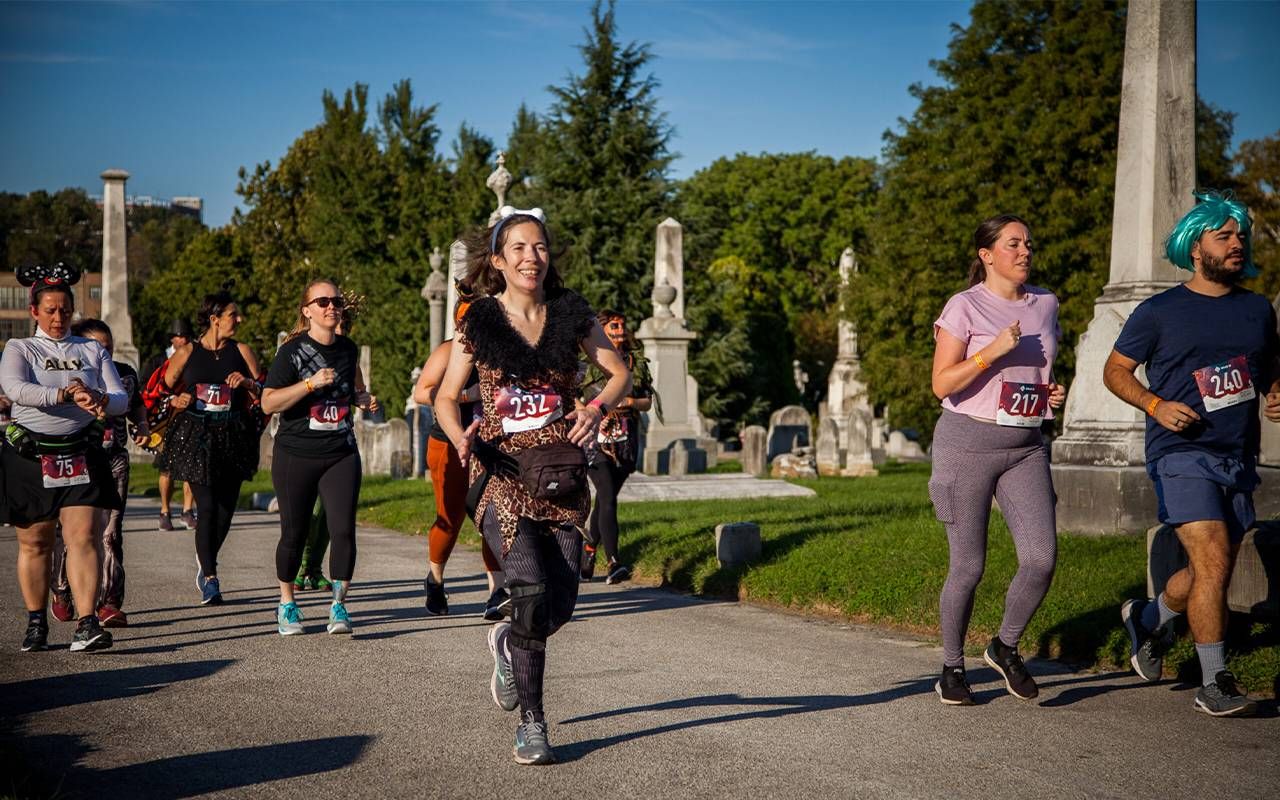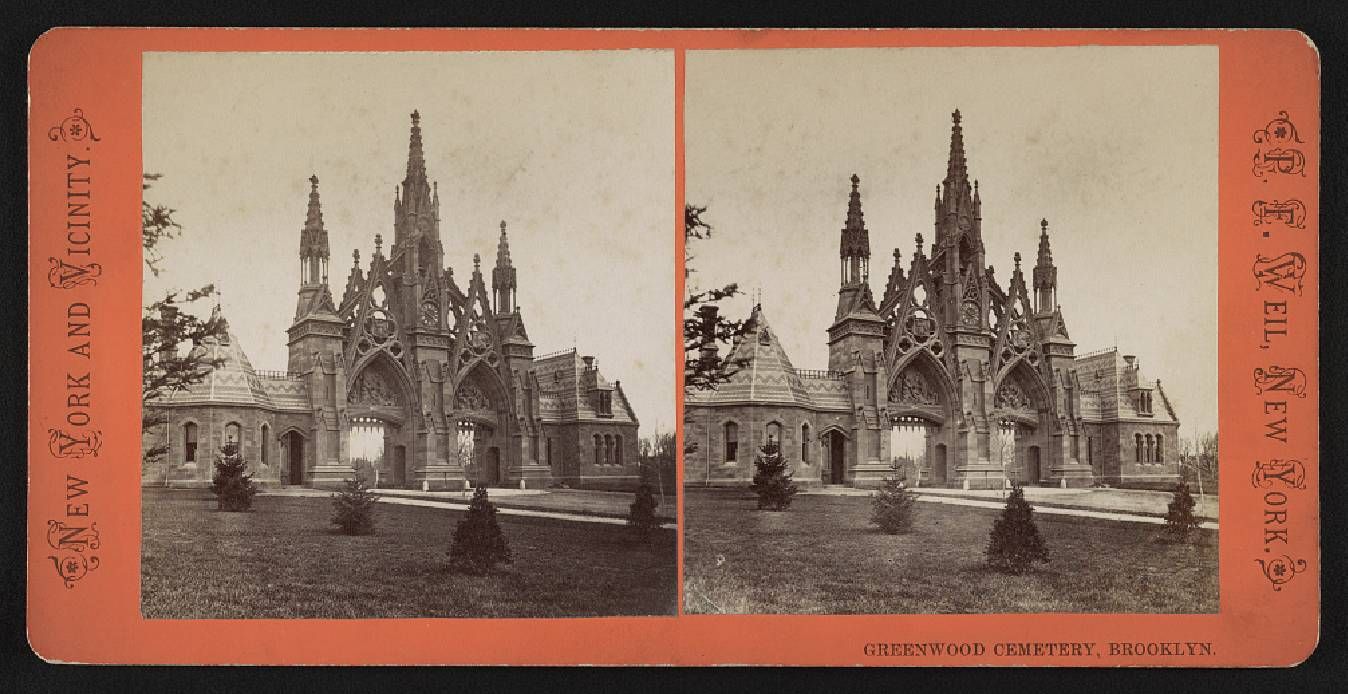The Odd Joys of Tombstone Tourism
You can hear music, watch films, join a book club and even hear from cemetery beekeepers
I had a fun day recently in a place where you never expect to have fun. It's a cemetery — a very cool cemetery, even though that's not a phrase one hears very often — and it's only one of many in the country that offer unique, educational and sometimes just plain enjoyable experiences, most of which are free and open to everyone.

I may just become a tombstone tourist, also known as a taphophile, people who are fascinated by everything cemetery — gravesites, obelisks, allegorical sculptures and crypts. The Historic Congressional Cemetery in Washington D.C., the first national cemetery, posits that "genealogists, photographers, historians, dog walkers, birders, joggers, anthropologists and Victorian scholars can all find something to love among the old stones."
I may just become a tombstone tourist, also known as a taphophile, people who are fascinated by everything cemetery – gravesites, obelisks, allegorical sculptures and crypts.
In the early 19th century, as cities like Boston became more populated, small church burial grounds became overcrowded, and the Massachusetts Horticultural Society came up with a solution, creating beautiful burial grounds whose landscapes were inspired by the Victorian style gardens of Europe.
The Creation of Garden Cemeteries
Dedicated in 1831, Mount Auburn Cemetery in Cambridge, Massachusetts was the first rural or garden cemetery in the U.S., known as "a garden of graves" or "a city of the dead." The rural cemetery movement spread as other cities established their own garden cemeteries, which became popular places for people to picnic and visit with family and friends – those who were alive as well as those who were deceased.
By the mid-19th century, landscape designers, seeing how much people liked to congregate outdoors, began to build large city parks such as Central Park and Prospect Park in New York City.
Keith Eggener, an architectural historian, associate professor of American Art and Architecture at the University of Missouri, and author of the book "Cemeteries," says "Increasingly, cemeteries became places of the dead almost exclusively, as the living preferred to avoid them except when absolutely necessary."
Along with paying your respects to some of the world's most fascinating humans, you can also see a plethora of living creatures, both flora and fauna, in burial grounds which double as botanical gardens or arboretums.
In Greenwood (sometimes spelled Green-wood) Cemetery in Brooklyn, New York, you can hear the chatter and squawks of monk parakeets, also known as Quaker parrots, which live in the gothic spires at the ornate main gate, and observe the more than 185 species of migrating birds that stop and visit there each year. You can participate in a "Meet the Bees" tour, led by a certified master beekeeper, where apiary enthusiasts learn about the cemetery's bee colony and can actually hold an active comb full of honeybees.

Greenwood Cemetery is one of the most fascinating and well-visited cemeteries, with an extensive collection of famous "residents," tours, activities and programs. Numerous well-known figures are buried there including artist Jean-Michel Basquiat, Leonard Bernstein, DeWitt Clinton and a host of baseball celebrities, Civil War generals and politicians.
One of Greenwood's most unique programs is called Bridge to Crafts Careers Program, an educational experience for young job seekers interested in the fields of masonry restoration and construction. Presentations for the public have included "Grief in Our Hands: Interacting with Loss Through Art" and "A Day in the Life of a Post-Mortem Restorative Specialist."
Washington D.C.'s Congressional Cemetery has a book club called "Tombs & Tomes," whose members mordantly point out that their reading selections stray towards the macabre.
Earlier this year, the cemetery sponsored a Death Doula Day with Rosie Grant, a TikToker whose claim to fame is cooking recipes she has found on gravestones. At this National Historic Landmark, there's an off-leash dog walking program, with owner-and-pup "Yappy Hours" and a Doggy Day Spa and pond. Santa pays an annual visit here, with photo ops for a most unusual holiday card.
History and Celebrations
The Congressional Cemetery is also believed to be the only U.S. cemetery with a section devoted to the LGBTQ population. William Boyce Mueller, involved in the 1991 founding of the Forgotten Scouts, which lobbied to end the ban on gay Boy Scouts, is interred there, along with Barbara Gittings, the founder of the New York chapter of the Daughters of Bilitis, the first U.S. lesbian rights organization.
In Hollywood Forever Cemetery, situated in the heart of Hollywood in Los Angeles, you can pay homage to the hundreds of directors, stars, singers and other celebrities buried there including Judy Garland, Rudolph Valentino, Cecil B. DeMille and Valerie Harper (whose "Rhoda Morgenstern" was one of my favorite TV characters when I was growing up in the 70s.)

The cemetery hosts the nation's largest Dia de Los Muertos (Day of the Dead) celebration outside of Mexico. They also have literary events, lectures and film screenings attended by thousands, where classic Hollywood movies are projected onto the side of a mausoleum. And, just before Halloween 2016, a pair of punk rockers named Mike and Poli actually tied the knot at a cemetery wedding ceremony in front of the Johnny Ramone memorial statue. (Both Johnny and DeeDee Ramone are buried there.)
Bluff Hill Cemetery in Elgin, Illinois, offers moonlit tours during which you can learn about historic burial practices, cemetery markers and the variety of funerary inscriptions and symbols seen on tombs. Visitors can even use specialized investigative equipment, along with their own cameras, to test for and capture evidence of paranormal activity.
Laurel Hill Cemetery, a 187-year-old Victorian Cemetery in Philadelphia, is the setting for Market of the Macabre, a yearly outdoor market "celebrating morbid curiosity," which presents a curated collection of assorted oddities and features food trucks, music and live entertainment. They also have an annual fundraiser named, appropriately, "The Gravediggers' Ball," a "Rest in Peace 5K" Halloween costumed race and the Boneyard Bookworms Book Club.
Spring Grove Cemetery and Arboretum in Cincinnati, Ohio, sponsors an annual Dog Day of Summer Event, the only day of the year that dog owners are allowed to bring their four-legged friends to explore the grounds. Visitors can go on an organized Dogwood Trail Walk, attend the "Luau Picnic/Barbecue with Your Pooch" and even adopt a puppy (imagine the bizarre names that might be appropriate for a dog adopted from a cemetery!)
The Sounds of Silence
"Music is the moonlight in the gloomy night of life," wrote the German writer Jean Paul Friedrich Richter. Death of Classical, a nonprofit organization of music performances, brings live classical music to actual crypts, catacombs and cemeteries in New York City and "Tunes from the Tombs," an annual music festival in Oakland Cemetery in Atlanta that attracts about 4,000 listeners, are two ways that music enters the cemetery.
Along with music, Maple Grove Cemetery has rotating art exhibits, craft workshops for kids and grownups, and, yes, Murder Mystery evenings.
Maple Grove Cemetery, in Kew Gardens, Queens, in New York City, is the only cemetery in the country with an indoor concert hall, complete with a baby grand piano. I attended a Mardi Gras Festival there, and saw a performance honoring two long dead cemetery "residents" who were jazz musicians. Along with music, Maple Grove Cemetery has rotating art exhibits, Civil War re-enactments, craft workshops for kids and grownups, and, yes, Murder Mystery evenings.
It is also the final resting place of Millie Tunnell, a corncob-smoking woman who was born into slavery in Virginia and moved to New York after being emancipated. Tunnell, who lived not far from where I went to high school, died somewhere between the ages of 110-114.
Elise Madeleine Ciregna, a cemetery and gravestone historian, Director of Administration of the Committee on the Study of Religion at Harvard University, and editor of Markers, a scholarly journal of the Association for Gravestone Studies, writes that "I can definitely say there is much more life in cemeteries – if we only open our eyes and begin to ask the right questions, the monuments just might give us some very interesting answers." A provocative and fascinating thought, indeed. I'm ready to make a list.


